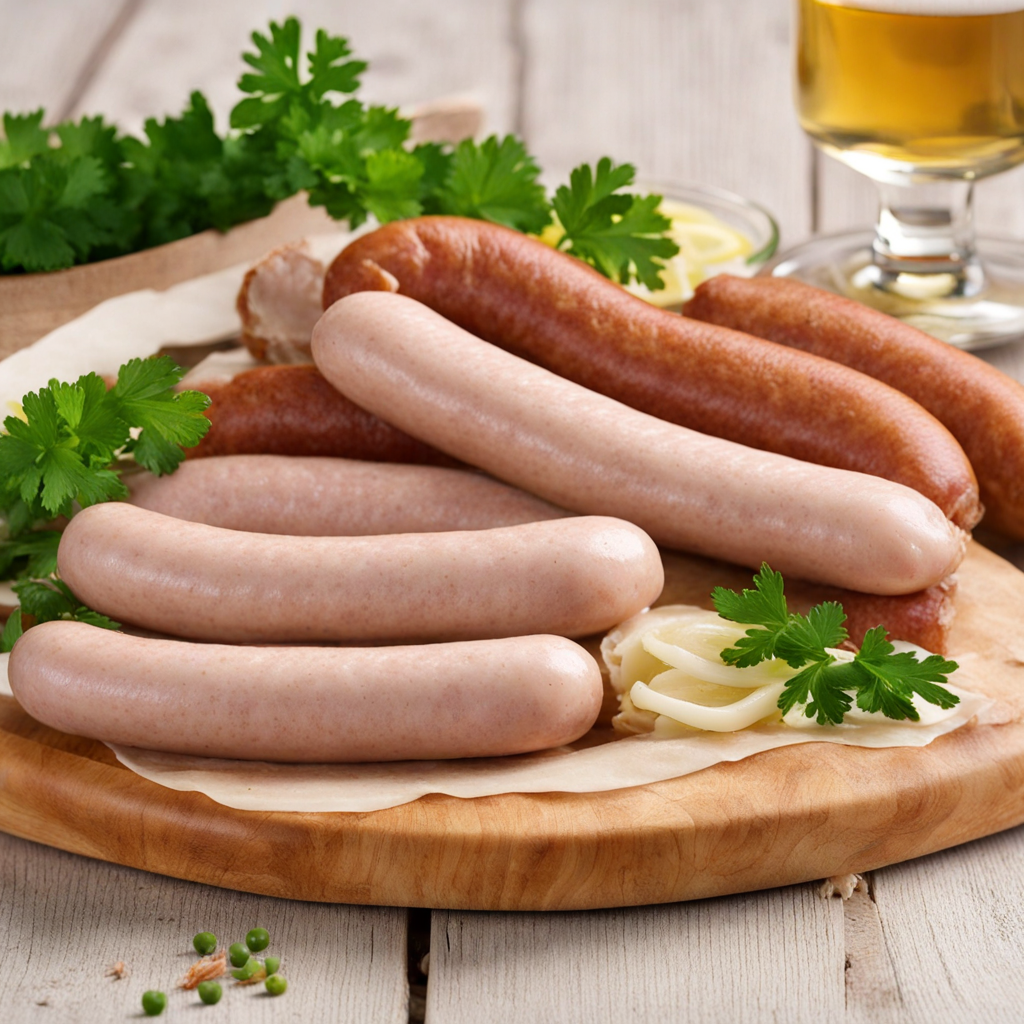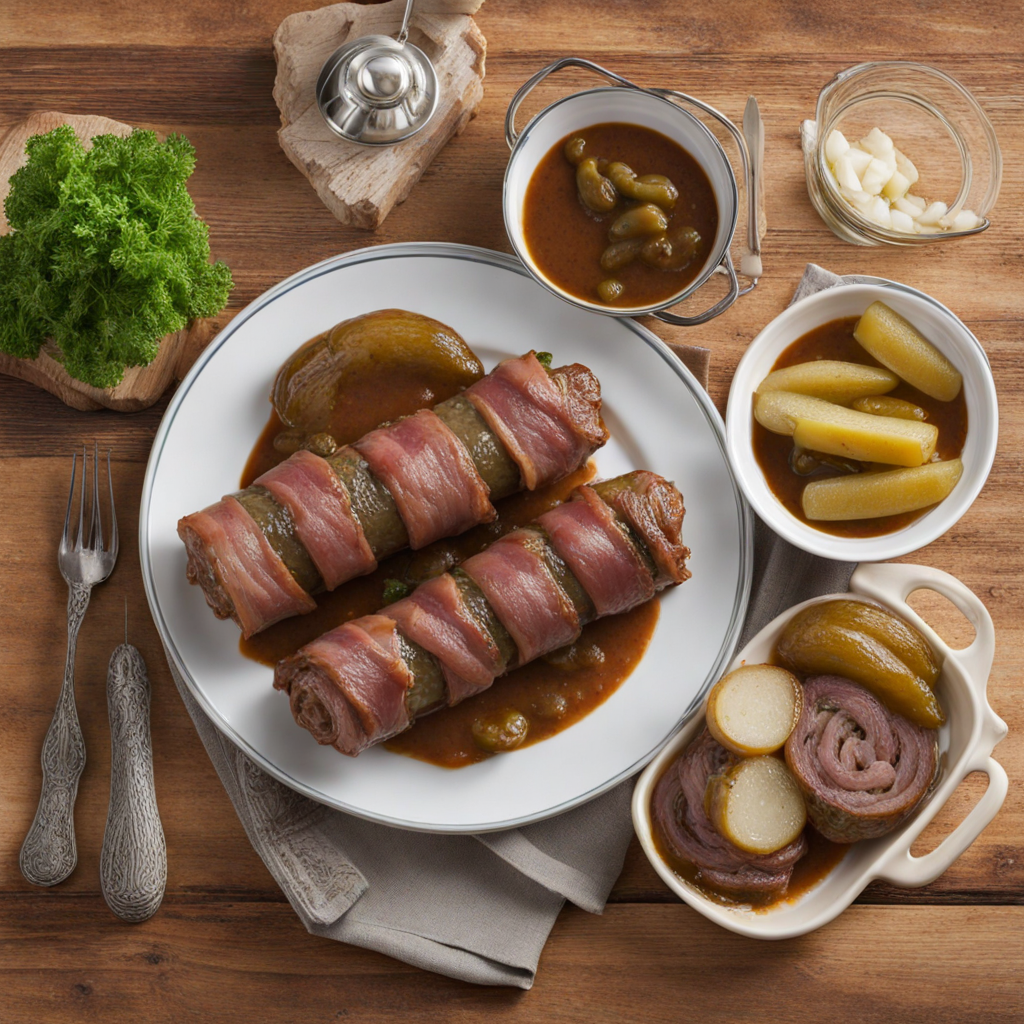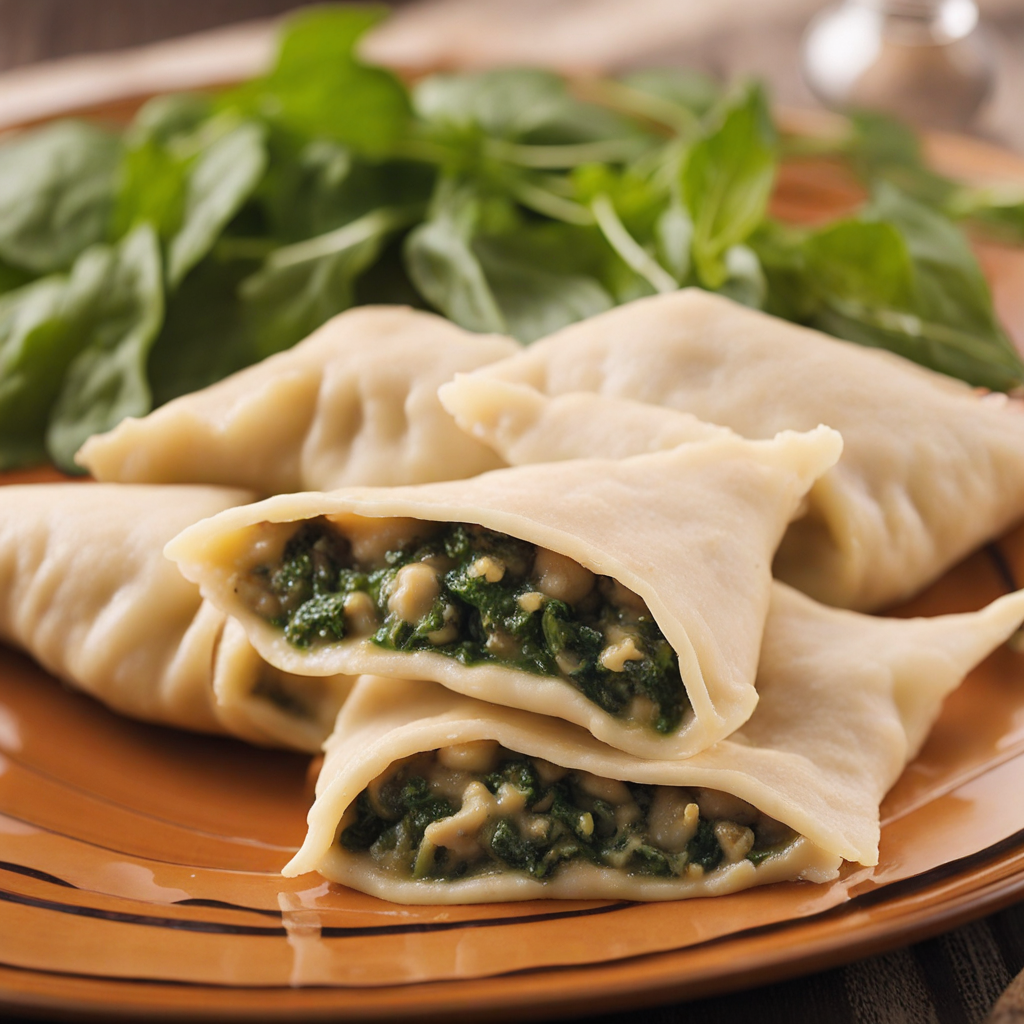Weisswurst
Weisswurst, a traditional Bavarian sausage, is a delightful culinary experience that embodies the rich flavors of Germany. Made primarily from minced veal and pork back bacon, this sausage is distinctively flavored with a blend of fresh parsley, lemon zest, and a hint of cardamom. The ingredients are carefully mixed to form a smooth and creamy texture, which is then stuffed into a natural casing, giving it a pale, almost white appearance. This unique color, combined with its mild flavor, sets Weisswurst apart from other sausages, making it a perfect choice for those looking to explore something new and different in the sausage world. Typically enjoyed in the morning or during festive occasions, Weisswurst is traditionally served with sweet mustard and freshly baked pretzels. The sweet mustard enhances the mildness of the sausage, creating a delightful contrast that tantalizes the taste buds. As you take your first bite, the tender and juicy texture melts in your mouth, while the subtle hints of spices and herbs unfold slowly, allowing you to savor every moment. This dish is often accompanied by a cold glass of Weissbier, a refreshing wheat beer that complements the flavors perfectly. One of the most charming aspects of Weisswurst is its cultural significance in Bavaria. It is customarily eaten before noon, as a tradition that dates back to the 19th century when it was made fresh daily and needed to be consumed quickly. This unique eating ritual adds to the experience, making Weisswurst not just a meal, but a social event. Whether enjoyed at a local biergarten or made at home, Weisswurst invites food lovers to indulge in its rich heritage, making it a must-try for anyone eager to discover the delightful tastes of German cuisine.
How It Became This Dish
The History of Weißwurst: A Culinary Gem from Bavaria Origin and Early History Weißwurst, or "white sausage," is a traditional Bavarian dish that embodies the region's rich culinary heritage. Its origins date back to the 19th century, specifically around the year 1857, in Munich, where it is believed to have been created by a butcher named Georg Schneider. According to local lore, Schneider devised the recipe to cater to the tastes of Bavarian nobility who were seeking a delicately flavored sausage made from finely minced veal, pork back fat, and a blend of fresh herbs and spices. The distinctive pale color of Weißwurst comes from the lack of artificial coloring and the use of non-smoked meats, setting it apart from other German sausages. The main ingredients of Weißwurst are veal, pork fat, onions, parsley, lemon zest, and spices such as salt and white pepper. The sausage is encased in a natural pork casing, and its texture is notably smooth, achieved through a meticulous grinding process. Notably, the use of fresh, high-quality ingredients reflects the Bavarian emphasis on craftsmanship and regional produce, which is a cornerstone of the local culinary philosophy. Cultural Significance Weißwurst is not just a dish; it is a cultural symbol of Bavaria and a staple of local festivities. Traditionally, it is consumed as a breakfast item or as a snack during the day, often accompanied by sweet mustard and freshly baked pretzels (Brezn). The custom of enjoying Weißwurst before noon stems from its freshness; it is believed that the sausages should be consumed on the same day they are made to ensure optimal flavor and safety, as they contain no preservatives. The tradition of eating Weißwurst has evolved into a social ritual, especially during gatherings and celebrations. The most famous event associated with this delicacy is the "Weißwurstfrühstück" or "white sausage breakfast," which is a popular Bavarian custom. This meal typically includes Weißwurst, sweet mustard, pretzels, and wheat beer (Hefeweizen). The act of enjoying Weißwurst with friends and family reflects the Bavarian spirit of Gemütlichkeit, an untranslatable term that conveys a sense of coziness, warmth, and good cheer. In Bavarian folklore, there is a humorous saying about the sausage: "Weißwurst is only truly Weißwurst when you can eat it before noon." This saying emphasizes the cultural importance of time and tradition in the enjoyment of this dish, and it underlines the regional pride in maintaining culinary customs. The Development Over Time As with many traditional foods, Weißwurst has undergone various changes and adaptations over the years. Initially, it was primarily a local specialty consumed within Bavaria. However, with the expansion of German cuisine and the growing popularity of Bavarian culture, Weißwurst began to spread beyond its regional roots. Today, it can be found in many German restaurants and is celebrated at events such as Oktoberfest, where it is showcased alongside other iconic Bavarian foods. In the late 20th century, the rise of globalization and the increasing influence of international cuisines led to a re-examination of traditional German foods, including Weißwurst. Chefs and food enthusiasts began experimenting with the classic recipe, incorporating modern culinary techniques and innovative flavors. Some variations emerged, including the addition of different herbs, spices, or even unconventional proteins, while still paying homage to the original recipe. The industrialization of food production also impacted the way Weißwurst is made and consumed. While artisanal butcher shops still produce high-quality, handmade sausages, mass production has made Weißwurst more accessible to a wider audience. Pre-packaged versions can now be found in supermarkets across Germany and beyond, allowing people from different regions to experience this Bavarian delicacy. Regional Variations and Modern Interpretations While the classic recipe remains revered, numerous regional variations of Weißwurst can be found throughout Bavaria. Some areas might include unique regional spices or even alternate meats, reflecting local tastes and traditions. The popularity of Weißwurst has also led to the creation of fusion dishes that combine traditional Bavarian flavors with international influences, such as Weißwurst tacos or Weißwurst sliders. Moreover, the modern health-conscious movement has prompted some chefs to create lighter versions of Weißwurst, using leaner meats or alternative proteins like poultry. These adaptations cater to changing dietary preferences while maintaining the essence of the original dish. Weißwurst in Contemporary Culture In contemporary society, Weißwurst continues to hold a significant place in Bavarian culture. It is often featured in culinary festivals and events celebrating regional cuisine. The dish is also highlighted in various media, including cookbooks and television shows, which explore the intricacies of Bavarian cooking. Furthermore, the celebration of Bavarian culture abroad, particularly in regions with large German expatriate communities, has helped to sustain the popularity of Weißwurst beyond Germany. Food tourism has also played a role in the resurgence of interest in Weißwurst. Travelers seeking authentic culinary experiences are drawn to Bavaria for its hearty fare, and Weißwurst is often at the top of their must-try lists. As such, many restaurants and culinary tours now emphasize traditional Bavarian breakfast experiences, where guests can indulge in fresh Weißwurst alongside other local specialties. Conclusion Weißwurst is more than just a sausage; it is a reflection of Bavarian identity, tradition, and community. From its humble beginnings in a local butcher shop to its status as a beloved culinary symbol, Weißwurst has evolved while remaining deeply rooted in its cultural heritage. Whether enjoyed at a festive gathering, a leisurely breakfast, or as part of a modern culinary creation, Weißwurst continues to delight palates and bring people together, ensuring its place in the annals of German culinary history for years to come.
You may like
Discover local flavors from Germany







